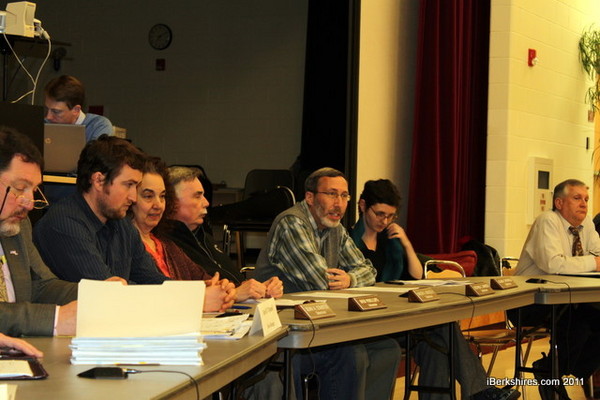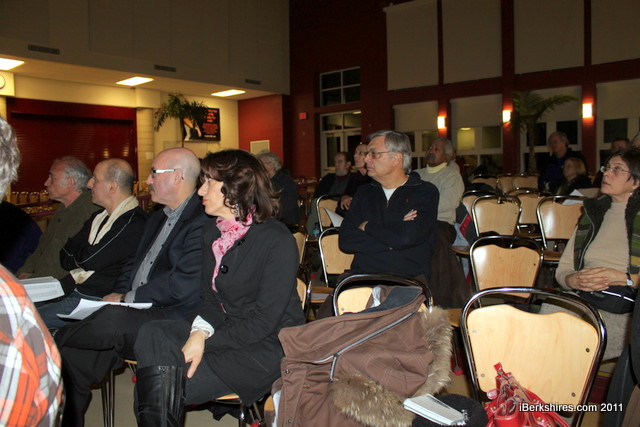
Great Barrington Officials: Road Work Matter of Safety
 Residents continue to question the need for extensive street repair. |
Merchants expressed dismay over the project's timeline last November, believing it will deter customers during the busy summer season. The Selectmen, however, said the deteriorating roadway must be repaired and that it was a matter of safety.
Selectwoman Alana Chernila pleaded with residents gathered for the special meeting at Monument Valley Middle School to allow the reconstruction to move into the next phase.
"This is and will continue to be a community project," she said. "There are many reasons that I continue to support this plan. I'm fighting for this because it involves the safety of my family and your families."
In fact, safety was a main concern for both sides of the table. While many citizens were concerned of the proposed removal of several righthand-turn lanes — especially the southbound turning lane that leads onto Taconic Avenue and is a main access route to Fairview Hospital — Chairman Sean Stanton and others said those lanes proposed a threat to cyclists and would have no impact on traffic congestion during the busy summer months.
"My belief is that we should make it as safe as possible for bicycles," Stanton said. "While we can't add an actual bike lane, we are adding space for bicycles. We want to encourage more people to ride their bikes."
Also of concern is the proposal to keep the Rotary Way crosswalk in the center of town, which currently is not located near any lights and does not have a signal button. The Rev. Charles Van Ausdall, pastor at United Church of Christ on Main Street, said the crosswalk will continue to be a hazard.
"If you don't do something different then it's going to be as dangerous as it was before," Van Ausdall said. "It's that fourth lane that never stops when you're crossing. Why don't we put up some signage now and see how it works over the next two years. With the current situation it is a miracle that people even get across."
The project, currently in the 25 percent design phase, would resurface the road, repair sidewalks, upgrade pedestrian crossings, install new lighting and replace aging trees between Cottage and Taconic streets. It must be approved within the deadlines set by the Department of Transportation, which is funding the project. A vote at a special town meeting on Feb. 9 will determine if it will go forward.
Since November, a task force has been established to review parking and access during and after the reconstruction; some parking spaces initially removed in the draft plan were put back in. The town is also working with DOT to ensure two-way traffic during the construction and planning to keep merchants and residents informed on the progress on a regular basis.
"The select board has been listening and responding to citizens throughout this process," said Stanton. "There are opportunities for limited changes to be made. Let me remind everyone that this is a process."
While nothing was resolved at the meeting, Selectwoman Deborah Phillips tried to reassure those in attendance that the board and the design team have done their research.
"I've talked to town officials in Chatham and Lenox about this," she said. "We can look at the experience of other communities. We really can have control of the process. If the state says barrel through we can say stop. But we won't know until the 75 percent phase. I don't see any reason to stop the project now."















